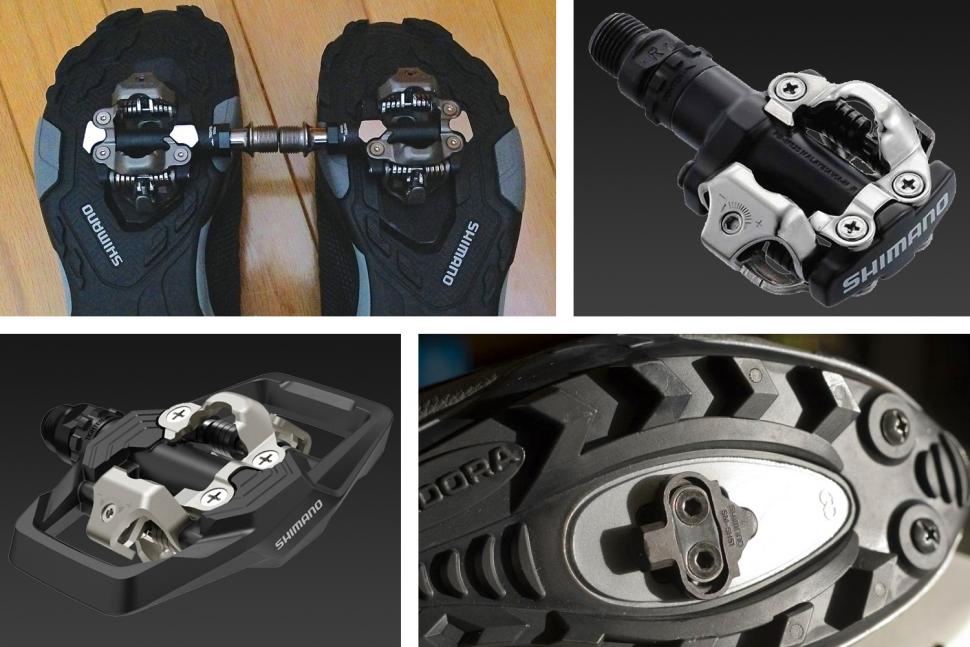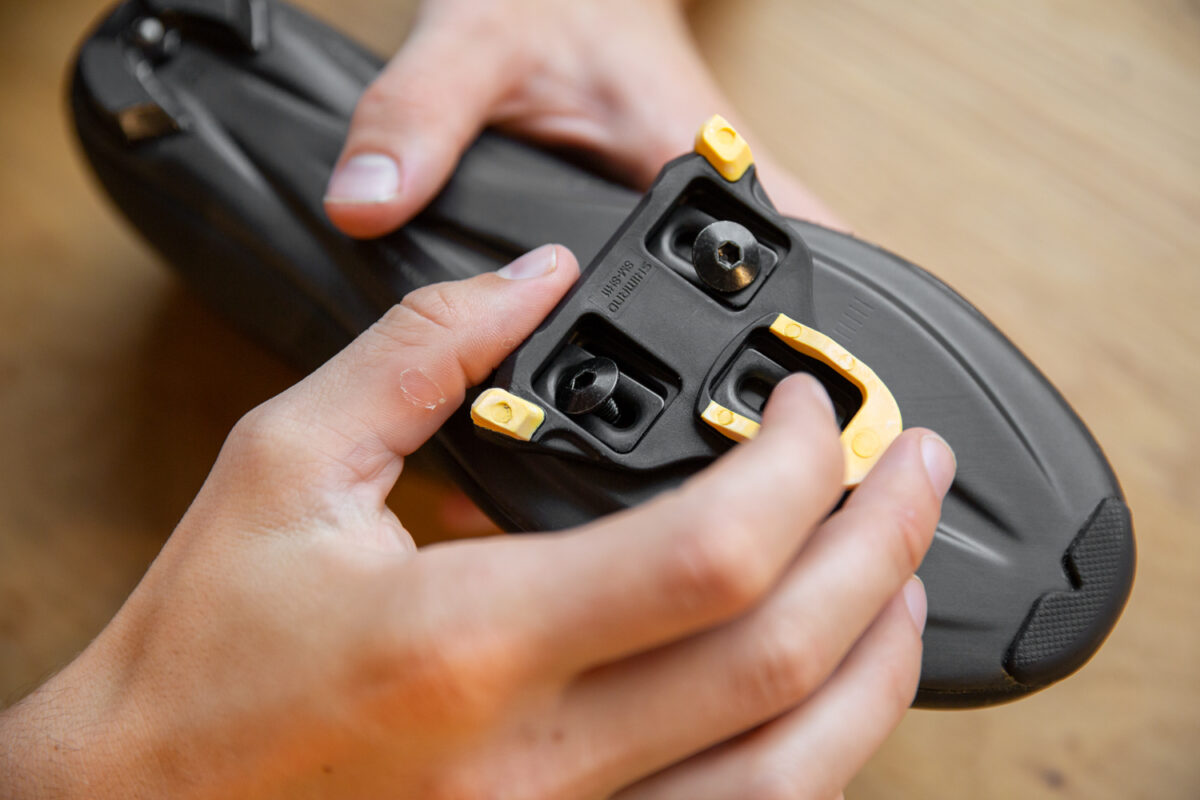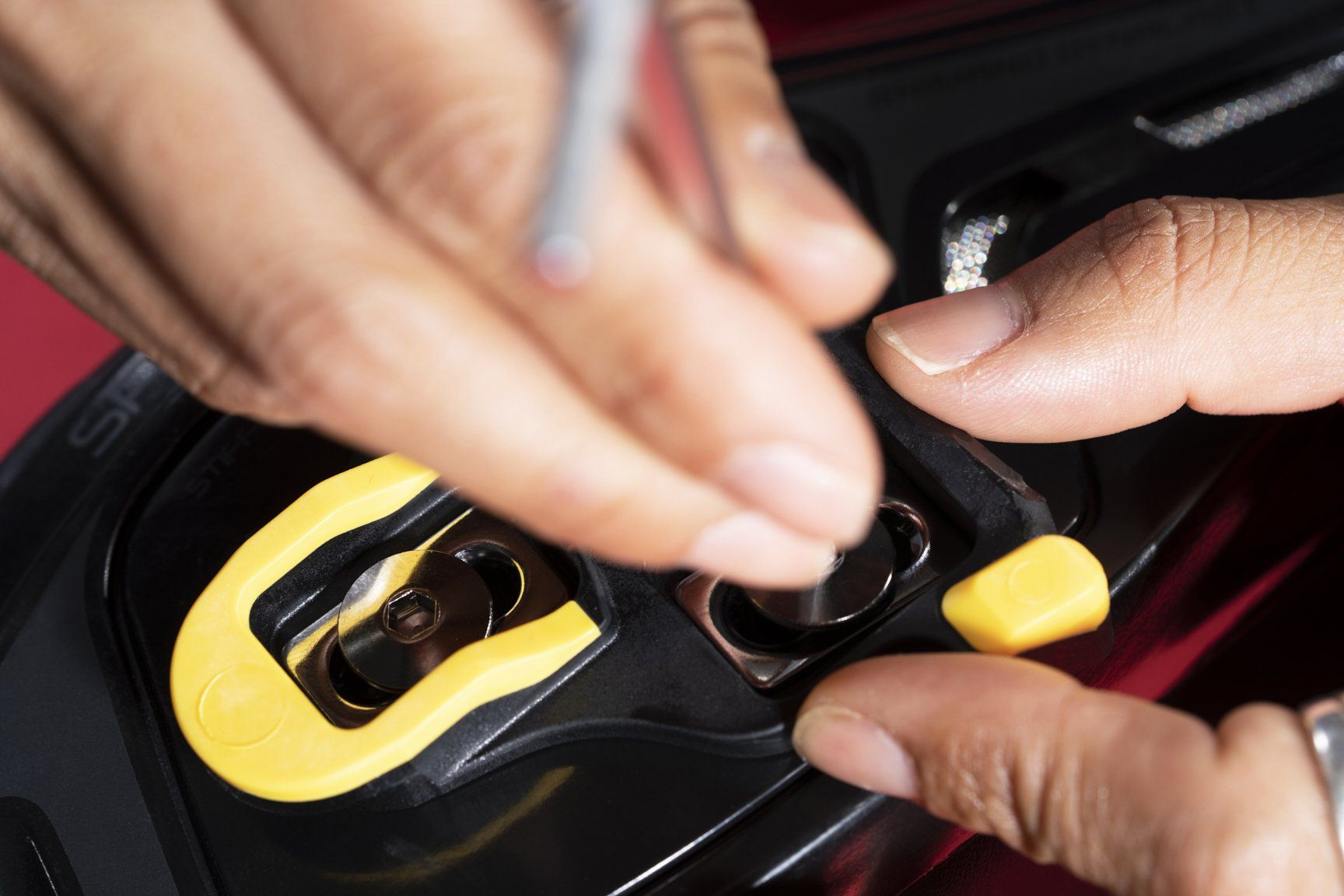Understanding the Importance of Proper Cleat Alignment
Proper cleat alignment is crucial for optimal performance and comfort when using Shimano SPD pedals. When cleats are misaligned, it can lead to reduced pedaling efficiency, increased knee strain, and a higher risk of injury. On the other hand, properly aligned cleats enable riders to maintain a smooth and efficient pedaling motion, resulting in improved overall cycling performance.
One of the primary benefits of proper cleat alignment is the reduction of knee strain. When cleats are misaligned, it can cause the knee to track inward or outward, leading to increased stress on the joint. By ensuring proper cleat alignment, riders can reduce the risk of knee injuries and maintain a healthy and comfortable pedaling motion.
In addition to reducing knee strain, proper cleat alignment also improves pedaling efficiency. When cleats are aligned correctly, it enables riders to maintain a smooth and efficient pedaling motion, resulting in improved power output and reduced fatigue. This is particularly important for riders who engage in long-distance cycling or high-intensity training.
Furthermore, proper cleat alignment is essential for optimal Shimano SPD pedal performance. Shimano SPD pedals are designed to work in conjunction with specific cleat types, and misaligned cleats can compromise the pedal’s performance. By ensuring proper cleat alignment, riders can optimize the performance of their Shimano SPD pedals and enjoy a smooth and efficient ride.
When it comes to fitting Shimano SPD cleats, proper alignment is critical. Riders should take the time to ensure that their cleats are aligned correctly, as it can make a significant difference in their overall cycling performance and comfort. By following the manufacturer’s guidelines and taking the necessary steps to ensure proper cleat alignment, riders can enjoy a smooth and efficient ride with their Shimano SPD pedals.
Choosing the Right Shimano SPD Cleats for Your Pedals
When it comes to fitting Shimano SPD cleats, selecting the right type of cleat for your pedals is crucial. Shimano offers a range of SPD cleats, each designed to work with specific pedal models and riding styles. Two of the most popular Shimano SPD cleat models are the SM-SH51 and SM-SH56.
The SM-SH51 cleat is designed for use with Shimano’s SPD-SL pedals, which are popular among road cyclists. This cleat features a three-bolt attachment system and is designed to provide a secure and stable connection between the shoe and pedal. The SM-SH51 cleat is also compatible with Shimano’s SPD-L pedals, which are designed for use with Shimano’s SPD-L pedal system.
The SM-SH56 cleat, on the other hand, is designed for use with Shimano’s SPD-M pedals, which are popular among mountain bikers and commuters. This cleat features a two-bolt attachment system and is designed to provide a secure and stable connection between the shoe and pedal. The SM-SH56 cleat is also compatible with Shimano’s SPD-M pedal system.
When choosing the right Shimano SPD cleat for your pedals, it’s essential to consider your riding style and the type of pedals you’re using. If you’re a road cyclist, the SM-SH51 cleat may be the best choice. However, if you’re a mountain biker or commuter, the SM-SH56 cleat may be more suitable.
In addition to considering the type of pedal you’re using, it’s also essential to consider the level of float you need. Float refers to the amount of movement allowed between the shoe and pedal. Shimano SPD cleats offer a range of float options, from zero float to six degrees of float. If you’re a beginner, a cleat with a higher float option may be more suitable, as it will allow for more movement between the shoe and pedal.
Ultimately, choosing the right Shimano SPD cleat for your pedals requires careful consideration of your riding style, pedal type, and float needs. By selecting the right cleat, you can ensure a secure and stable connection between your shoe and pedal, which is essential for optimal performance and comfort.
Preparing Your Shoes and Pedals for Cleat Installation
Before installing Shimano SPD cleats, it’s essential to prepare your cycling shoes and pedals to ensure a smooth and secure installation process. Here’s a step-by-step guide on how to prepare your shoes and pedals for cleat installation:
Step 1: Clean the Shoe Sole
Start by cleaning the sole of your cycling shoes to remove any dirt, dust, or debris that may interfere with the cleat installation process. Use a soft-bristled brush or a cloth to gently scrub the sole, paying particular attention to the area where the cleat will be installed.
Step 2: Clean the Pedal Surface
Next, clean the surface of your Shimano SPD pedals to ensure a secure connection between the cleat and pedal. Use a soft-bristled brush or a cloth to gently scrub the pedal surface, paying particular attention to the area where the cleat will be installed.
Step 3: Apply Lubricant or Adhesive
Depending on the type of cleat you’re using, you may need to apply a lubricant or adhesive to the cleat or pedal surface. Check the manufacturer’s instructions to determine if any lubricant or adhesive is required. If so, apply a small amount to the designated area.
Step 4: Inspect the Cleat and Pedal
Before installing the cleat, inspect the cleat and pedal to ensure they are free from any debris or damage. Check the cleat for any signs of wear or damage, and inspect the pedal for any signs of corrosion or damage.
By following these steps, you can ensure that your shoes and pedals are properly prepared for cleat installation, which will help to ensure a smooth and secure installation process. Remember to always follow the manufacturer’s instructions for specific guidance on preparing your shoes and pedals for cleat installation.
A Step-by-Step Guide to Fitting Shimano SPD Cleats
Fitting Shimano SPD cleats requires attention to detail and a step-by-step approach to ensure proper installation. Here’s a detailed guide on how to fit Shimano SPD cleats:
Step 1: Position the Cleat on the Shoe Sole
Start by positioning the cleat on the shoe sole, ensuring it is centered and aligned with the pedal. Use a ruler or a straightedge to draw a line on the shoe sole, indicating the center of the cleat.
Step 2: Mark the Screw Holes
Mark the screw holes on the shoe sole, using a pencil or a marker. Make sure the marks are accurate and aligned with the cleat.
Step 3: Drill the Screw Holes (if necessary)
If your shoe sole does not have pre-drilled screw holes, you may need to drill them yourself. Use a drill bit that is slightly smaller than the screw, and drill slowly and carefully to avoid damaging the shoe sole.
Step 4: Install the Cleat
Install the cleat by inserting the screws into the screw holes and tightening them securely. Make sure the cleat is properly seated and aligned with the pedal.
Step 5: Adjust the Cleat for Optimal Alignment and Float
Adjust the cleat for optimal alignment and float by loosening the screws and repositioning the cleat as needed. Use a wrench or an Allen key to adjust the cleat, and make sure it is properly secured before tightening the screws.
Step 6: Tighten the Screws
Tighten the screws securely, making sure they are snug but not over-tightened. Use a wrench or an Allen key to tighten the screws, and make sure the cleat is properly secured.
By following these steps, you can ensure proper installation of your Shimano SPD cleats and enjoy a smooth and efficient ride. Remember to always follow the manufacturer’s instructions for specific guidance on fitting Shimano SPD cleats.
Troubleshooting Common Issues with Shimano SPD Cleat Installation
While fitting Shimano SPD cleats can be a straightforward process, some common issues may arise during installation. Here are some troubleshooting tips and solutions to help you overcome these challenges:
Cleat Misalignment
If the cleat is not properly aligned with the pedal, it can cause difficulties with pedaling and may lead to knee strain or discomfort. To resolve this issue, reposition the cleat on the shoe sole and ensure it is centered and aligned with the pedal.
Loose Screws
Loose screws can cause the cleat to shift or move during pedaling, leading to reduced pedaling efficiency and comfort. To resolve this issue, tighten the screws securely, but avoid over-tightening, which can damage the shoe sole or pedal.
Difficulty with Float Adjustment
Adjusting the float of the cleat can be tricky, but it’s essential for optimal pedaling efficiency and comfort. To resolve this issue, refer to the manufacturer’s instructions for guidance on adjusting the float, and use a wrench or Allen key to make the necessary adjustments.
Cleat Not Engaging Properly
If the cleat is not engaging properly with the pedal, it can cause difficulties with pedaling and may lead to reduced pedaling efficiency. To resolve this issue, check the cleat and pedal for any debris or damage, and clean or replace them as necessary.
By following these troubleshooting tips and solutions, you can overcome common issues that may arise during Shimano SPD cleat installation and ensure a smooth and efficient ride. Remember to always refer to the manufacturer’s instructions for specific guidance on troubleshooting and resolving issues with Shimano SPD cleats.
Optimizing Your Shimano SPD Cleat Setup for Maximum Performance
Once you’ve installed your Shimano SPD cleats, there are several ways to fine-tune your setup for optimal performance. By adjusting the cleat position, float, and tension, you can optimize your pedaling efficiency, comfort, and overall cycling experience.
Adjusting the Cleat Position
The cleat position can have a significant impact on your pedaling efficiency and comfort. By adjusting the cleat position, you can optimize your pedaling stroke and reduce strain on your knees and ankles. To adjust the cleat position, use a wrench or Allen key to loosen the screws and reposition the cleat as needed.
Adjusting the Float
The float of the cleat refers to the amount of movement allowed between the shoe and pedal. By adjusting the float, you can optimize your pedaling efficiency and comfort. To adjust the float, use a wrench or Allen key to loosen the screws and adjust the cleat as needed.
Adjusting the Tension
The tension of the cleat refers to the amount of force required to engage and disengage the cleat from the pedal. By adjusting the tension, you can optimize your pedaling efficiency and comfort. To adjust the tension, use a wrench or Allen key to loosen the screws and adjust the cleat as needed.
Benefits of Optimization
Optimizing your Shimano SPD cleat setup can have several benefits, including improved pedaling efficiency, reduced knee strain, and enhanced overall cycling performance. By fine-tuning your cleat position, float, and tension, you can optimize your pedaling stroke and reduce strain on your knees and ankles.
Conclusion
By following these tips and adjusting your Shimano SPD cleat setup, you can optimize your pedaling efficiency, comfort, and overall cycling experience. Remember to always refer to the manufacturer’s instructions for specific guidance on adjusting your Shimano SPD cleats.
Common Mistakes to Avoid When Fitting Shimano SPD Cleats
When fitting Shimano SPD cleats, it’s essential to avoid common mistakes that can compromise the performance and comfort of your cycling experience. Here are some common mistakes to avoid:
Improper Cleat Alignment
One of the most common mistakes when fitting Shimano SPD cleats is improper cleat alignment. This can lead to reduced pedaling efficiency, increased knee strain, and decreased overall cycling performance. To avoid this mistake, ensure that the cleat is properly aligned with the pedal and the shoe sole.
Over-Tightening Screws
Over-tightening the screws can damage the shoe sole or pedal, leading to reduced performance and comfort. To avoid this mistake, tighten the screws securely, but avoid over-tightening.
Neglecting to Adjust the Cleat for Optimal Float
Neglecting to adjust the cleat for optimal float can lead to reduced pedaling efficiency and comfort. To avoid this mistake, adjust the cleat for optimal float, taking into account your riding style and preferences.
Not Cleaning the Shoe Sole and Pedal Surface
Not cleaning the shoe sole and pedal surface can lead to reduced performance and comfort. To avoid this mistake, clean the shoe sole and pedal surface before installing the cleat.
Not Applying Lubricant or Adhesive
Not applying lubricant or adhesive can lead to reduced performance and comfort. To avoid this mistake, apply lubricant or adhesive as necessary to ensure smooth and efficient pedaling.
By avoiding these common mistakes, you can ensure a smooth and efficient cycling experience with your Shimano SPD cleats. Remember to always follow the manufacturer’s instructions and take the time to properly install and adjust your cleats.
Conclusion: Enjoy a Smooth Ride with Properly Fitted Shimano SPD Cleats
In conclusion, fitting Shimano SPD cleats requires attention to detail and a thorough understanding of the installation process. By following the steps outlined in this article, you can ensure a smooth and efficient cycling experience with your Shimano SPD cleats.
Proper cleat alignment is crucial for optimal performance and comfort, and selecting the right cleats for your specific pedals and riding style is essential. Preparing your shoes and pedals for cleat installation, and following a step-by-step guide to fitting the cleats, can help ensure a successful installation.
Troubleshooting common issues that may arise during installation, and optimizing your cleat setup for maximum performance, can also help you get the most out of your Shimano SPD cleats. By avoiding common mistakes, such as improper cleat alignment and over-tightening screws, you can ensure a smooth and efficient ride.
By following the tips and guidelines outlined in this article, you can enjoy a smooth and efficient cycling experience with your Shimano SPD cleats. Remember to always follow the manufacturer’s instructions and take the time to properly install and adjust your cleats.
With properly fitted Shimano SPD cleats, you can enjoy improved pedaling efficiency, reduced knee strain, and enhanced overall cycling performance. So why wait? Get started today and experience the benefits of properly fitted Shimano SPD cleats for yourself.






